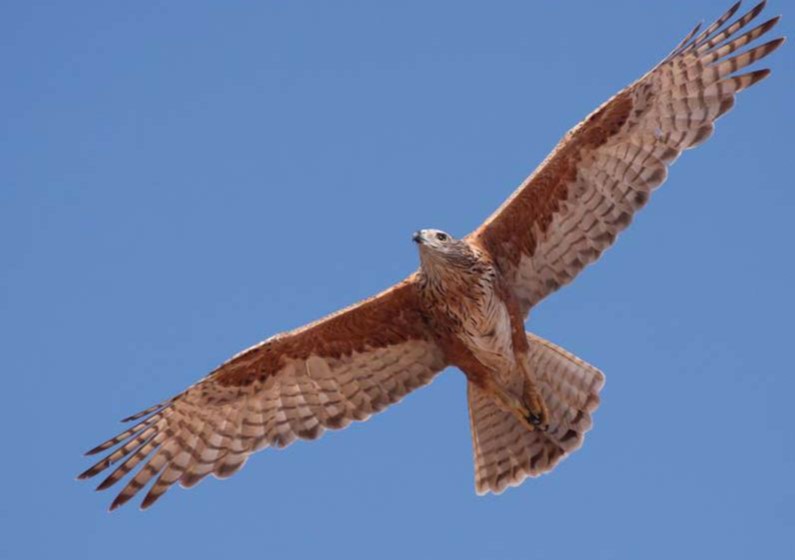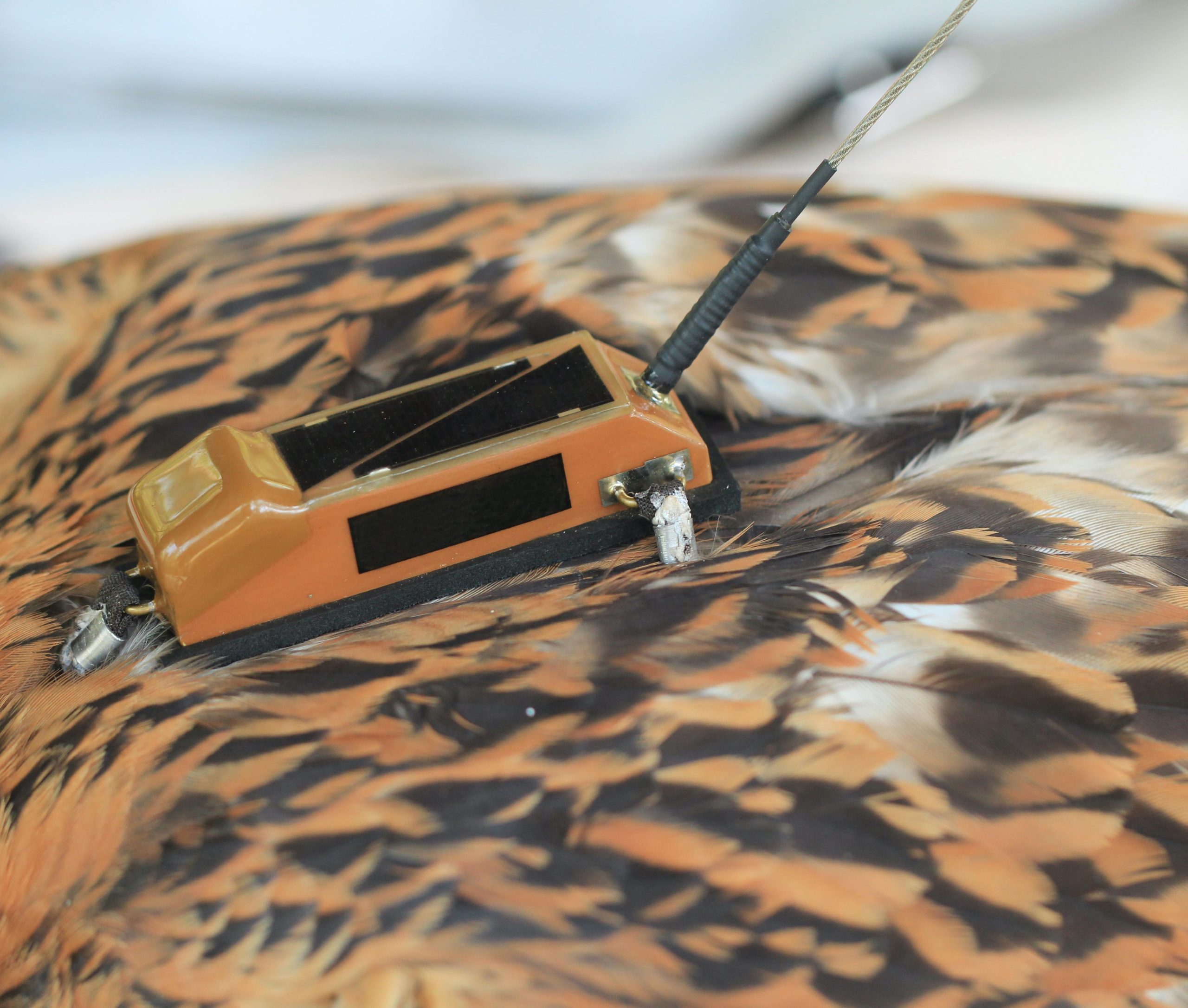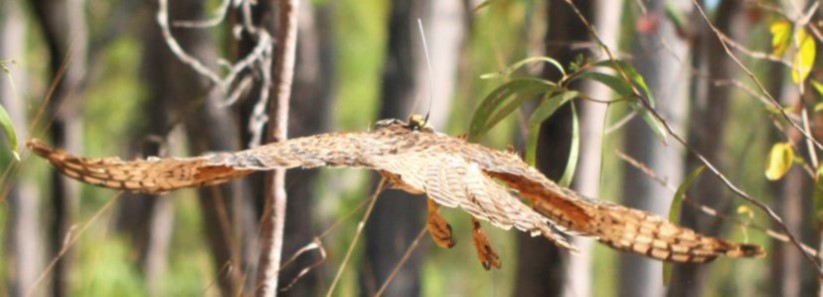AWC is engaged in an exciting project to improve our knowledge of one of Australia’s rarest and most mysterious endemic raptors – the Red Goshawk.
Red Goshawks are powerful predators with a rufous-streaked body and a wingspan that can stretch well over a metre. These hawks inhabit riparian areas and eucalypt forests, hunting other native birds – including Rainbow Lorikeets and cockatoos – over vast distances. Red Goshawks are highly cryptic and very little is known about the current breeding population or the bird’s ecological requirements.
This threatened species was once widespread, with breeding populations from NSW to northern Australia and from Cape York to the Kimberley. Sadly, the Red Goshawk is now functionally extinct in NSW and listed as a conservation priority by both the NSW Government, as part of the Saving our Species program, and the Queensland Government, as part of the Back on Track species prioritisation framework. Red Goshawks are indicator species and, as such, a decline in their populations reflects a decline in ecosystem health.
 © J Watson/UQ
© J Watson/UQ
The primary threat and cause of decline in Red Goshawks is believed to be habitat loss, alteration and fragmentation. These birds naturally occur at low densities and require prodigious tracts of relatively intact and biodiverse land for hunting and nesting. Since 2000, this species has lost ~3 million ha of its known and potential habitat (Ward et al. 2019; MacColl pers comm). This habitat loss is happening both as a result of deforestation and altered fire regimes.
AWC is working to halt the decline of this threatened species. We currently safeguard 6.5 million ha across 30 properties and our conservation model to protect large areas of land for wildlife is exactly what the wide-ranging Red Goshawk requires. Suitable habitat has been identified at the Kimberley sites AWC manages with external partners and in five of our wildlife sanctuaries across northern Australia – Piccaninny Plains, Brooklyn, Pungalina-Seven Emu, Wongalara and Mornington. Red Goshawks have been confirmed on at least three of these, meaning that AWC already protects critical habitat for these rare birds. We are hopeful that they occur at all of the sites and that we can expand our monitoring program to target them.
 © Simon Cherriman/Insight Ornithology
© Simon Cherriman/Insight Ornithology
AWC is a leader in fire management and conducts Australia’s largest non-government fire program across more than 7.5 million hectares of Red Goshawk habitat in northern Australia. The program promotes ‘cool’, small, early dry season fires and, in the Kimberley, the incidence of large wildfires late in the season has been halved and the burn area reduced by more than 55 per cent. This ‘friendly’ fire regime improves ecosystem health and reduces fire impacts on tall, mature trees that the raptors require to nest in.
AWC Senior Ecologist Rich Seaton is passionate about the Red Goshawk and the importance of researching this remarkable bird. Rich first heard about the hawk 20 years ago from a fellow birder, ‘in a hushed voice and with wide eyes he lent across the table and told me he had seen a Red Goshawk. A seed was sown.’
This passion has led him to the Cape York Peninsula, where he has spent countless hours in the field, observing and attaching transmitters to Red Goshawks to track their movements.
 © J Searle/Ecotone
© J Searle/Ecotone
In collaboration with external researcher Chris MacColl from the University of Queensland, Rio Tinto, and the Queensland Government, we have so far tracked four adult birds and four fledglings. Preliminary results from this study indicate some unexpected movements and that the birds can cover huge distances, reaching up to hundreds of kilometres.
In order to better conserve the mysterious Red Goshawk, we need to improve our understanding of their ecology and how this relates to habitat management. Research such as this is crucial to ensure the protection and improvement of habitat on AWCs properties and throughout the raptor’s range.
Ward, M.S., Simmonds, J.S., Reside, A.E., Watson, J.E.M., Rhodes, J.R., Possingham, H.P., Trezise, J., Fletchers, R., File, L. and Taylor, M. (2019) Lots of loss with little scrutiny: The attrition of habitat critical for threatened species in Australia. Conservation Science and Practice 1 (11): https://doi.org/10.1111/csp2.117.
AWC Senior Ecologist, Dr Richard Seaton, talks to ABC about conserving Australia’s rarest bird of prey – the Red Goshawk.
Want to help with this critical research? Please look out for the Red Goshawk and email us if you see one: info@australianwildlife.org
Audio clip credit: ABC Radio Kimberley